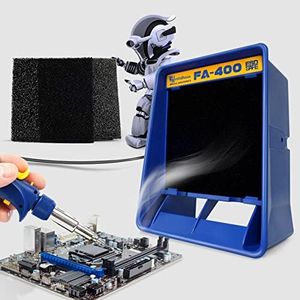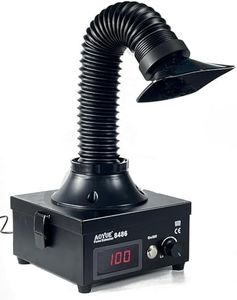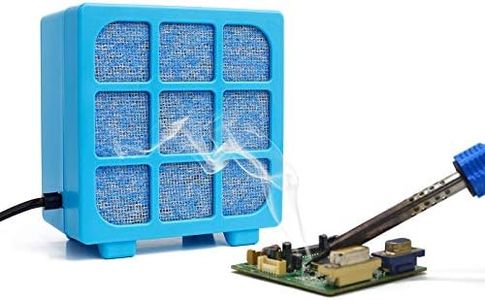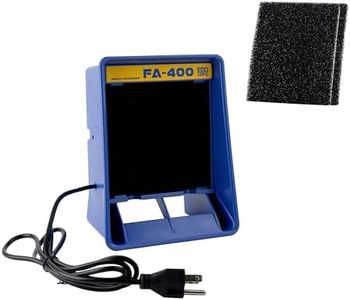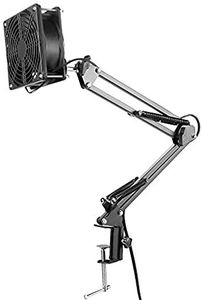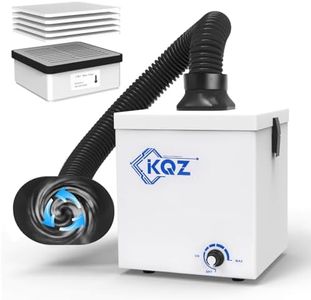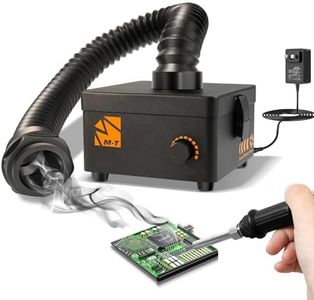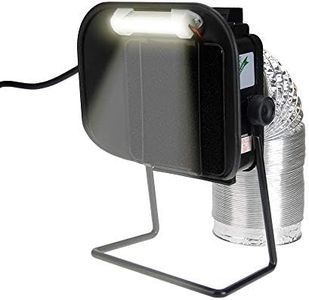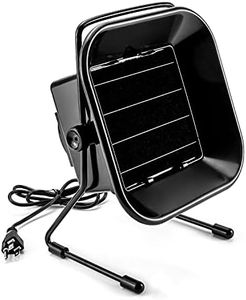We Use CookiesWe use cookies to enhance the security, performance,
functionality and for analytical and promotional activities. By continuing to browse this site you
are agreeing to our privacy policy
10 Best Solder Fume Extractors
From leading brands and best sellers available on the web.Buying Guide for the Best Solder Fume Extractors
Choosing the right solder fume extractor is crucial for both hobbyists and professionals who want to maintain safe air quality while soldering. Fume extractors help to remove harmful fumes produced during soldering, protecting your respiratory health and keeping your workspace clean. When picking a solder fume extractor, think about your typical work environment, how often and intensely you solder, and how portable or powerful you need the extractor to be. Understanding key features will ensure your choice matches your specific needs, making your working experience both safer and more comfortable.Airflow Capacity (CFM)Airflow capacity is usually measured in cubic feet per minute (CFM), and it determines how much air the extractor can move and filter in a minute. High CFM units can clear fumes quickly from large workspaces or environments where heavy soldering is common. Lower CFM works well for occasional, light soldering in small spaces. If you do frequent or large-scale soldering projects, aim for higher CFM values to ensure efficient fume removal. For hobbyists or those with limited space and infrequent use, lower airflow capacity is usually sufficient.
Filter TypeMost solder fume extractors use filters to capture particles and neutralize harmful gases. The most common filters are carbon filters, HEPA filters, or a combination. Carbon filters are effective at removing chemical odors and gases, while HEPA filters trap tiny particles in the air. A combined filter setup gives the best protection. Choose the filter type based on how sensitive you are to fumes, the size of your workspace, and the specific materials you solder. If you work with leaded solder or in an enclosed space, combination filters are safest.
Portability and SizeThe size and portability of an extractor affect how easily you can move or fit it into your workspace. Larger, stationary units are great for permanent workbenches, while compact, lightweight models work best for portable or tight spaces. If you move between work areas or have limited bench space, a smaller, more portable extractor is ideal. For those with a dedicated workstation, a larger, more robust model ensures constant, effective extraction.
Noise LevelNoise level tells you how loud the extractor will be during operation. Lower noise levels are more comfortable if you're working in a quiet setting or over long periods. Manufacturers usually rate noise in decibels (dB), where lower numbers mean quieter machines. If you value a peaceful environment or plan to use the extractor for long sessions, look for models with lower noise output.
Flexible Positioning (Arm/Nozzle Design)Some extractors come with adjustable arms or nozzles, which let you position the suction point close to where you're soldering. This feature is important for capturing fumes at the source, making extraction more effective. If you work on detailed projects or need to move around while soldering, an adjustable arm or nozzle with wide reach can be a huge benefit. For stationary or repetitive soldering, a fixed or less flexible design might suffice.
Ease of Filter ReplacementSince filters need regular changing for the extractor to stay effective, it's best to pick a model that makes replacing filters easy. Look for designs with tool-free access to filters or clear indicators telling you when a filter change is due. If you solder often, convenient filter replacement saves time and keeps you protected without hassle.

